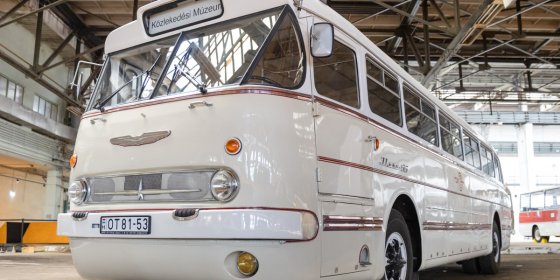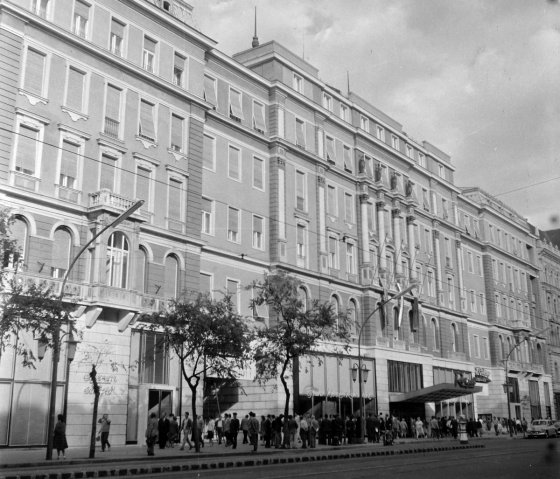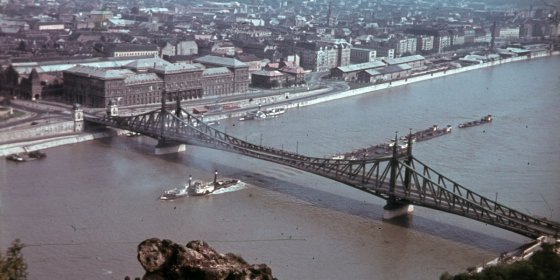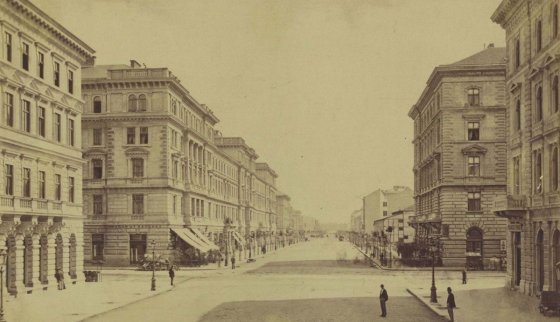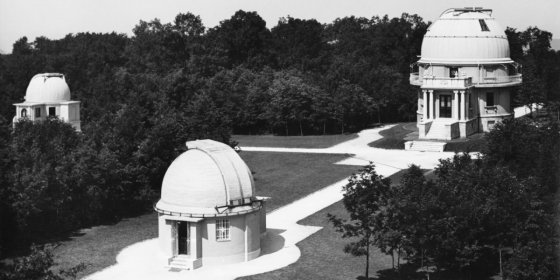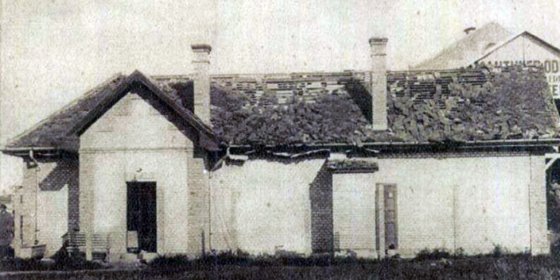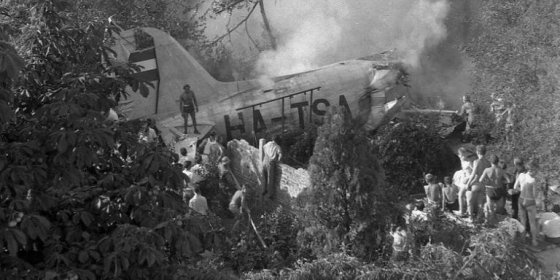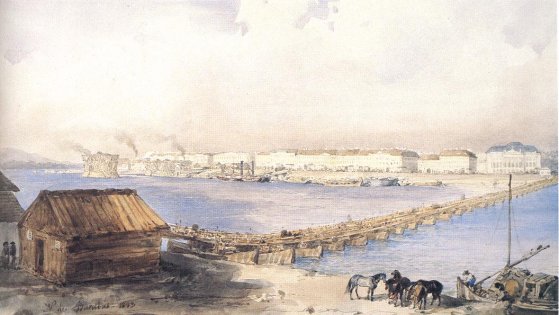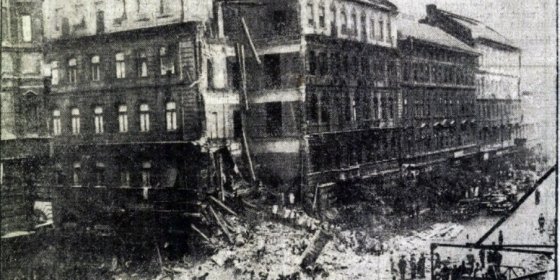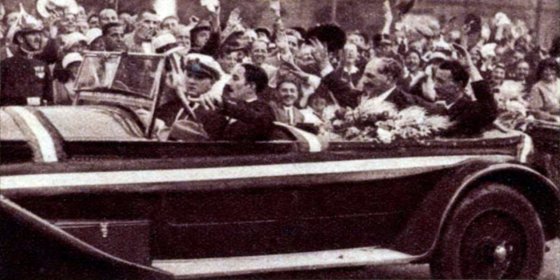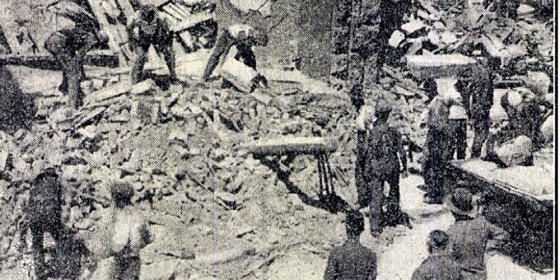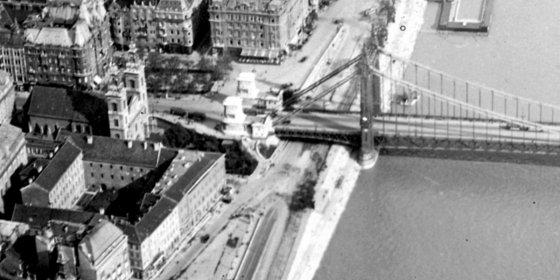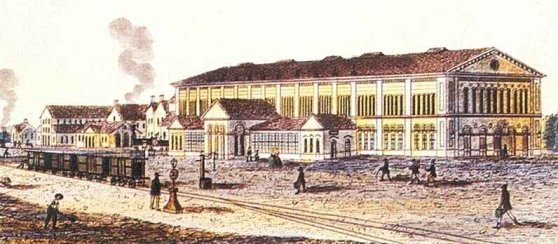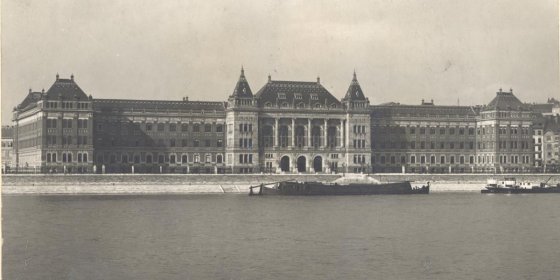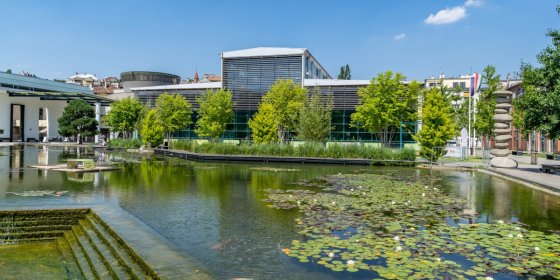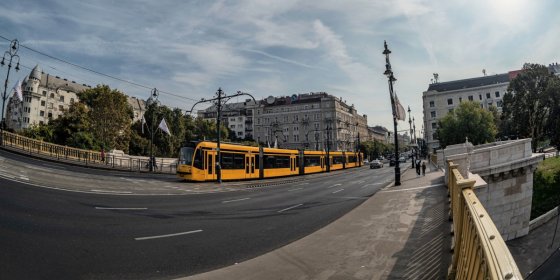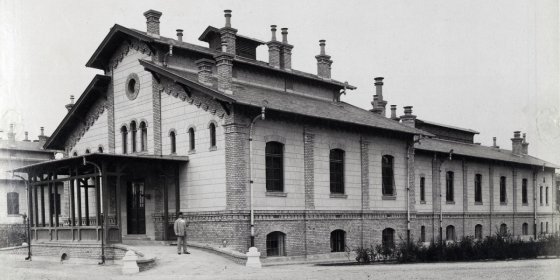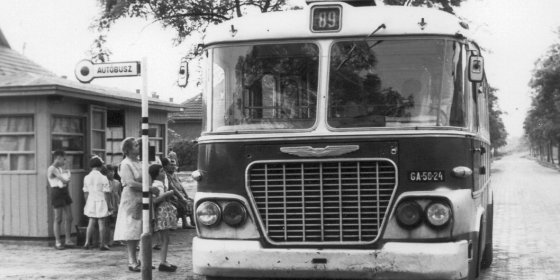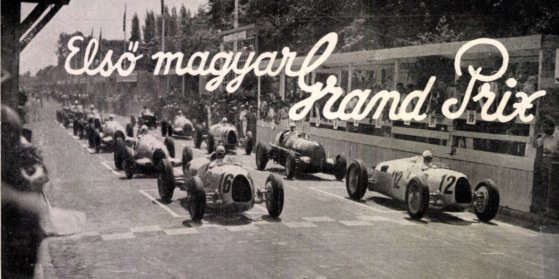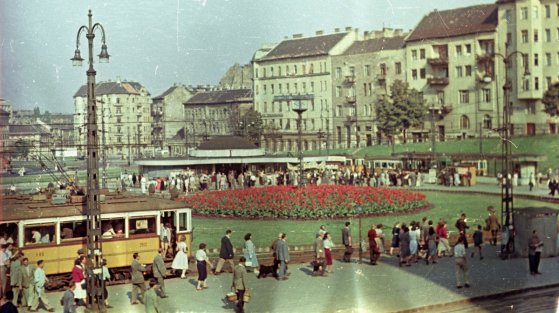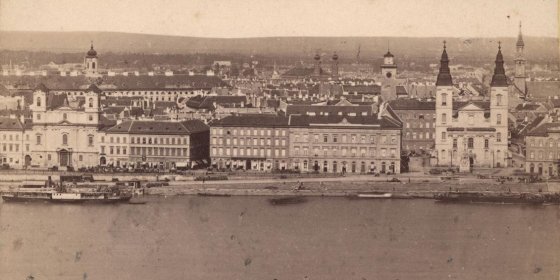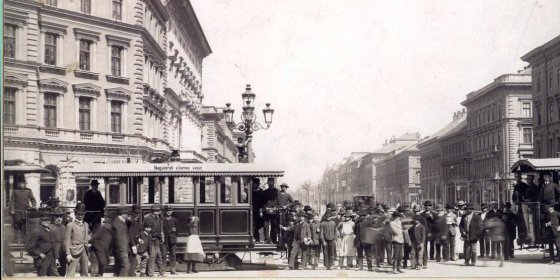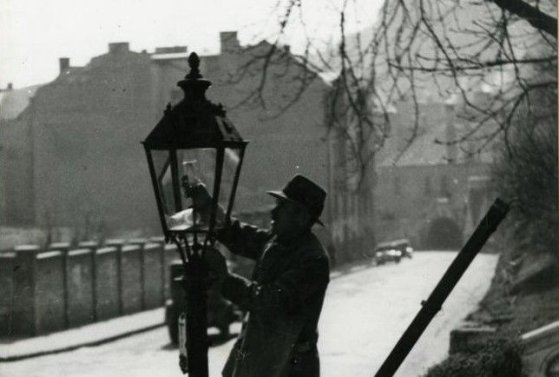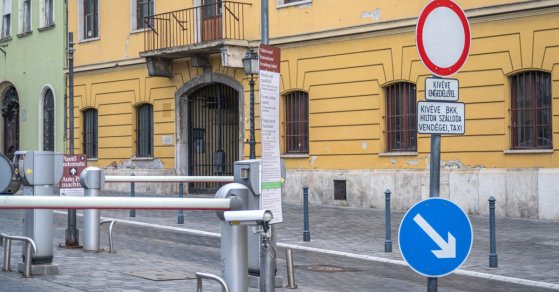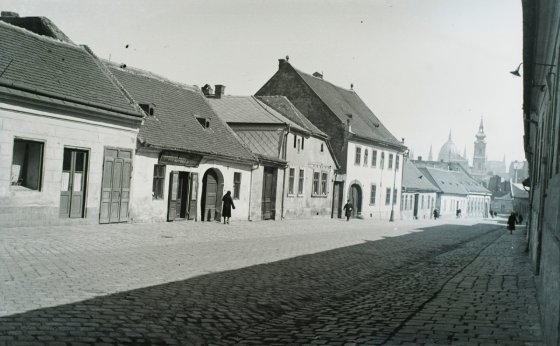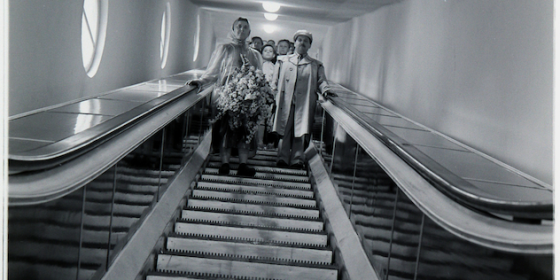 The „intertwined history” of the bridges and the city of Budapest
Which ideas and events have shaped the fate of bridges of Budapest and the cityscape? Alongside many other interesting facts, this question is also answered this newly published book by the Budapest City Archives, which introduces the history of bridges in Budapest.
The „intertwined history” of the bridges and the city of Budapest
Which ideas and events have shaped the fate of bridges of Budapest and the cityscape? Alongside many other interesting facts, this question is also answered this newly published book by the Budapest City Archives, which introduces the history of bridges in Budapest.
Csaba Domonkos
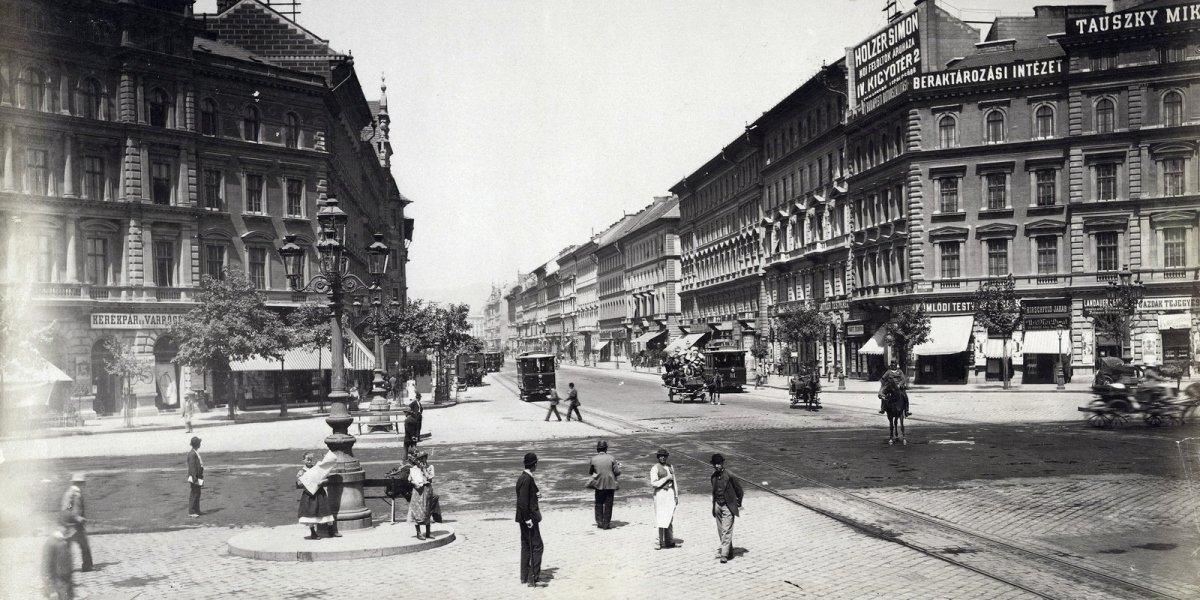 The Outer Ring Road was inaugurated 125 years ago - Budapest's main road was opened on Hungary's millennium
The Outer Ring Road was inaugurated 125 years ago - Budapest's main road was opened on Hungary's millennium
September 4, 2021 at 10:00 AM
Today, Outer Ring Road is one of the busiest roads in Budapest, lined with beautiful residential houses. Its construction lasted for 25 years, to open it, houses had to be demolished, a railway station had to be moved away, an area had to be filled, but finally, 125 years ago, on 31 August 1896, the Budapest Public Works Council could officially hand it over to the Budapest community.
The Ikarus 66 was an iconic piece of Hungarian bus production – Now we can see it renovated in the Museum of Transport
August 28, 2021 at 12:00 PM
A special bus was presented to the general public yesterday by the Museum of Transport: one of the last ten Ikarus 66 models produced. The vehicle was exhibited after several years of restoration in Kőbánya, in the Diesel Hall of the former Northern Locomotive Workshop. Budapest once expected these Ikarus buses to make transportation faster and more convenient, but passengers in the capital found them uncomfortable.
The luxury hotel was designed for tourists from the West - the Royal reopened 60 years ago
August 25, 2021 at 1:00 PM
The former legendary hotels of Budapest were almost completely destroyed in the Second World War and in the 1950s, and in the Rákosi era, no money was spent on building luxury hotels in the country, as there was no solvent demand for it. The situation changed after the defeat of the revolution and war of independence of 1956: tourists from the West and the currency they spent here became important to the country’s new leadership. Large-scale hotel developments began, among them one of the first was rebuilding the former luxury hotel, Royal, which reopened in August 1961.
It was rebuilt, but its decoration and name were changed - the Liberty Bridge was handed over 75 years ago
August 23, 2021 at 9:30 AM
At the end of the spectacular fireworks held in Budapest on the occasion of the founding of the state, glowing Greek fires were started on the bridges, including the Liberty Bridge. At that moment, surely few thought it was the first bridge to be rebuilt after the devastation of World War II and handed over to traffic on 20 August 1946.
Inspired by the boulevards of Paris - in 1876 the present-day Andrássy Avenue was handed over
August 21, 2021 at 10:00 AM
The traffic between the inner city of Pest and the Városliget went through Király Street for a very long time. The narrow street was very crowded, as not only the normal traffic passed through here, but also those who wanted to go to the Városliget for a little refreshment. The Avenue [Sugárút in Hungarian], officially handed over 145 years ago, in 1876, today's Andrássy Avenue, along which lavish palaces were built in place of the one-storey houses, was made to aid this situation.
The sky over Budapest - the observatory was moved to Svábhegy because of Trianon
August 16, 2021 at 9:00 AM
The construction of the new Budapest Observatory began on Svábhegy a hundred years ago, which replaced the Ógyalla observatory lost with Trianon. Despite the initial difficulties, a European-level research center was set up in a few years near Normafa, where the skies of Budapest are still being viewed in the observatory's typical domed building.
A part of the city has become uninhabitable - We still do not know who blew up the Csepel munitions depot 95 years ago
August 14, 2021 at 9:30 AM
A large-scale explosion shook Csepel and the southern part of Budapest on 12 August 1926, at quarter to seven p.m. The disaster 95 years ago caused severe damage to houses in Csepel and Budafok: it broke the window panes, swept the tiles off the roofs. Fortunately, the explosion did not claim human lives, the blaze and sound of which could be seen and heard throughout Budapest.
An almost concealed plane crash in Budapest - the tragedy in Zugló took place 60 years ago
August 6, 2021 at 3:30 PM
A terrible accident happened 60 years ago in Budapest: a plane crashed into a house in Zugló. The causes of the tragedy, which claimed 30 lives, and the official handling of the accident are more than interesting, as the authorities at the time were trying to cover up the case. Today, however, we know the sad story that put an end to the sightseeing flights over the capital for a long time.
The Buda Castle under constructionwas also visited by Maria Theresa, who visited the capital in 1751
August 4, 2021 at 3:00 PM
Although she gave permission to expand the Buda Castle, Maria Theresa visited Pest and Buda only twice. Her first visit took place in August of 1751, the 11th year of his reign, 270 years ago. This was when the diet was held in Bratislava and during that time the royal court spent a few days in Pest and Buda.
Life before the Chain Bridge
August 2, 2021 at 9:00 AM
The pontoon bridge between Pest and Buda was built due to the visit of Archduke Albert Casimir and was closed, with a little exaggeration, due to the trip of Count István Széchenyi. The pontoon bridge between the two banks of the Danube was built 255 years ago and was demolished 171 years ago.
The first horse-drawn railway of Pest started 155 years ago
August 1, 2021 at 9:30 AM
On 1 August 1866, the regular services of the city horse-drawn railway started in Pest. The first route led from today's Kálvin Square to Újpest, the journey time was 35 minutes. The new means of transport advocated by Count Sándor Károlyi was successful, and the horse-drawn railway contributed significantly to the development of Újpest. A few years after the handover of the first track, Pest and Buda were almost enmeshed by horse-drawn railway tracks.
The residential house on Rákóczi Road still stands today, the corner of which collapsed 85 years ago
July 25, 2021 at 9:00 AM
A collapsing house in Budapest in 1936 could have caused a huge tragedy. In vain did the residents signal to the owners that the walls were cracking, they did not feel safe, no substantive action was taken. The corner of the house at 73 Rákóczi Road collapsed on 23 July 1936, a few minutes before 3 pm.
Transatlantic pilots were greeted with a huge folk festival in Budapest 90 years ago
July 22, 2021 at 9:00 AM
The people of Budapest did not line up many times to celebrate the heroic deed of the Hungarians on the street. Funerals were unfortunately, more common, but 90 years ago the opportunity was given to celebrate the Hungarians as a hero in a street parade. Namely, György Endresz and Sándor Magyar, who flew across the Atlantic Ocean breaking three world records.
House collapsed in Angyalföld - The tragedy 90 years ago claimed the lives of eight people
July 21, 2021 at 9:30 AM
The whole of Budapest was shaken by the misfortune that took place 90 years ago and claimed the lives of eight workers. During construction, a house collapsed in Angyalföld, Szent László Road.
When the ramp of the Elizabeth Bridge was widened, moving the church also came up, in the end the sidewalk was lowered
July 17, 2021 at 9:00 AM
In the 1930s, the car traffic in Budapest was already so high that the Pest bridgehead of the Elizabeth Bridge had to be rebuilt in order to avoid permanent traffic jams and the risk of accidents. Even the relocation and even demolition of the Inner City Parish Church was discussed, but instead the designers chose an imaginative and inexpensive technical solution. The new ramp of the bridge was completed on 17 July 1936.
A train pulled out of Budapest's first railway station 175 years ago
July 15, 2021 at 9:00 AM
The first station building ('indóház') in Pest was handed over on 15 July 1846, from where the first Hungarian steam-powered train to Vác, which was the first section of the railway line to Vienna, left. With rail transport, the central role of Pest has been strengthened within the country and it set a significant development in motion. So much so that by the 1870s, rail traffic had outgrown Pest's first railway station.
The Royal Joseph Polytechnic University is 150 years old
July 11, 2021 at 9:00 AM
The history of the Budapest University of Technology and Economics dates back to the 18th century, as one of its predecessors, the Institutum Geometricum, was founded in 1782, while the other, the Joseph College of Technology, was founded in 1844. Yet today's institution, independent and acting as a university on its behalf, was established 150 years ago, in 1871, when the king sanctified the statutes of the university.
From factory to an exciting cultural centre - Millenáris Park is 20 years old
July 8, 2021 at 9:00 AM
Today, Millenáris is a huge park and event centre in Buda, but once the Ganz factory operated here, on the site of which, with the partial retention of the halls, one of the largest cultural centres of Budapest was opened on 6 July 2001.
Many kinds of trams have served Budapest in recent decades
July 6, 2021 at 9:30 AM
UV, ICS, Bengali, CAF, Combino, Hanover - these trams have defined tram transport in Budapest in recent decades. Now more CAF products are in service, but take a look at what kind of trams the people of Budapest used and what do these weird names mean?
Reporting infectious patients was ordered 140 years ago in Budapest
July 3, 2021 at 9:00 AM
Diseases and epidemics are part of our history, as we have seen in the last year and a half. In the XIX. century people began to recognize how each disease spreads and how to prevent them. The new epidemiological rules came into force in Budapest 140 years ago, on 1 July 1881. The obligation to report, and quarantine still helps to control epidemics today.
The unified ticket and pass system was introduced in public transport in Budapest 55 years ago
July 1, 2021 at 9:00 AM
By the mid-1960s, there were already 130 types of tickets for transport companies in the capital. The system was non-transparent, and the companies had much less revenue from tickets than the cost of operating the system. Therefore, a new fare system was introduced in Budapest on 1 July 1966, which has actually survived to this day.
Flórián, the first real shopping centre in Hungary, opened 45 years ago
June 29, 2021 at 9:30 AM
The Flórián shopping centre, then officially called Óbudai Centrum Department Store, was the first real shopping centre in Hungary. The building was handed over 45 years ago. It was built to serve the housing estate of Óbuda and North Buda, and it was so important that even the Roman ruins found here, the remains of the command building of the former legionary camp were sacrificed for it.
The first Hungarian Grand Prix in Népliget, held 85 years ago, was a huge sports success, but a commercial failure
June 27, 2021 at 9:00 AM
The most prestigious car race today is Formula 1, which has had races in Hungary since 1986. However, 50 years before Formula 1, in 1936, a Grand Prix was held in Hungary, namely in Népliget. The competition was successful from a sports standpoint, but a commercial disaster.
Széll Kálmán Square became a transport hub 80 years ago
June 18, 2021 at 9:30 AM
There was once a clay mine and then a sports field on the site of today's Széll Kálmán Square, where the tram junction and the pedestrian overpass, which defined the image of "Kalef" for decades, were completed 80 years ago, in June 1941. Then, in the middle of the square, a roundabout was created for trams, from where vehicles could depart in all directions. Modern passenger waiting areas and bus terminals were also built, but the development did not fully win the favour of the contemporary public.
160 years ago, the city of Pest declared war on dirt roads
June 11, 2021 at 9:00 AM
Today, Budapest's road network typically consists of paved roads. Although there are still dirt roads, their number is constantly decreasing. In Budapest, the paving of streets started relatively late, but 160 years ago, the city of Pest adopted a decree on what paved roads should look like.
One hundred and fifty years ago, the law on the construction of the Outer Ring Road was given royal consent
June 9, 2021 at 9:00 AM
A flood drain, a navigable waterway serving industrial sites, or a more elegant route? In the 19th century, several plans were made for the location of the Outer Ring Road. The issue was closed by law 150 years ago.
The first gas lamp in Pest was lit 205 years ago
June 3, 2021 at 9:00 AM
The aldermen of Pest were given plenty to think about when providing night lighting on the city streets in the 18th century, so in 1715, they forbade staying on the street without a candle or lantern after sunset. Lantern-bearers appeared, carrying candles and oil lamps in front of pedestrians. Oil lamps began to be put out in public spaces at the end of the century, but they only gave little light. The solution was the gas lamp, the first of which was set up in Pest by a scientist, experimenting physician, Lajos Tehel, on 5 June 1816. The lamp was lit up on the facade of the university building on today’s Egyetem Square. Now it is part of the National Museum’s collection.
Vehicle entry to Buda Castle first restricted 35 years ago
May 31, 2021 at 3:00 PM
Today car access to the castle is limited, and only midi-buses run within its ancient walls. Restrictions on access were introduced 35 years ago because traffic endangered historic buildings and the caves beneath the streets of the castle.
Campaign launched against rats 90 years ago in Budapest
May 28, 2021 at 10:00 AM
A war against rats was launched in the capital in 1931, but a mistake slipped into the thorough and long-planned campaign. Fewer rats died than planned, and there were many "civilian" casualties, like dogs, cats, and birds.
Metro escalator tested in Hűvösvölgy terminus of the Children's Railway
May 27, 2021 at 10:00 AM
An escalator transported passengers for a few years from May 1956 at the Hűvösvölgy terminus of the Children's Railway. It was built as a kind of test. Its primary purpose was not to ensure the comfort of the passengers on the Children's Railway, then called the Pioneer Railway, but to educate the operators and users. At the time, the Budapest metro was already under construction, and the escalator needed testing too.
More articles
 The „intertwined history” of the bridges and the city of Budapest
Which ideas and events have shaped the fate of bridges of Budapest and the cityscape? Alongside many other interesting facts, this question is also answered this newly published book by the Budapest City Archives, which introduces the history of bridges in Budapest.
The „intertwined history” of the bridges and the city of Budapest
Which ideas and events have shaped the fate of bridges of Budapest and the cityscape? Alongside many other interesting facts, this question is also answered this newly published book by the Budapest City Archives, which introduces the history of bridges in Budapest.
 The Bridge Report, which brought a turning point in the history of Budapest
A travel report that changed the history of Pest and Buda, as well as Hungary. The little book contributed to the change of half a thousand years of legal customs and the implementation of an investment of unprecedented size and technical quality. This book was The Bridge Report [Hídjelentés in Hungarian].
The Bridge Report, which brought a turning point in the history of Budapest
A travel report that changed the history of Pest and Buda, as well as Hungary. The little book contributed to the change of half a thousand years of legal customs and the implementation of an investment of unprecedented size and technical quality. This book was The Bridge Report [Hídjelentés in Hungarian].
 Drama on the university wall - The heroic monument was planned 95 years ago
In the constant hustle and bustle of the Egyetem Square in Pest, the students may not even notice the monument that decorates the short section of wall between the church and the central building of ELTE. However, it commemorates their predecessors, the heroes who fought for their country in World War I, and those who heroically helped them. The first design of the dramatically collapsing soldier was born in 1928, ninety-five years ago.
Drama on the university wall - The heroic monument was planned 95 years ago
In the constant hustle and bustle of the Egyetem Square in Pest, the students may not even notice the monument that decorates the short section of wall between the church and the central building of ELTE. However, it commemorates their predecessors, the heroes who fought for their country in World War I, and those who heroically helped them. The first design of the dramatically collapsing soldier was born in 1928, ninety-five years ago.

